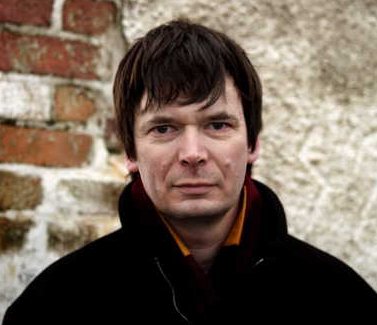
The Complaints, the third novel since Ian Rankin retired his popular Inspector John Rebus series, is just out. Read about the author, his work, and John Rebus in this 2007 interview from Mystery Scene #99.
Ian Rankin is the "King of Tartan Noir,” James Ellroy has declared. Two decades after the debut of his moody Edinburgh cop, Rankin’s realm is rapidly expanding beyond the UK where he is the top-selling crime fiction writer.
Inspector John Rebus has become an unlikely goodwill ambassador of sorts for Scotland. His cases have been translated into 22 languages and a second series of the popular TV films starring Ken Stott are in the works. Tourists from around the world trace Rebus’ steps on walking tours through Edinburgh including, of course, a mandatory stop at the Oxford Bar.
A slew of special events are being planned to celebrate two decades of Rebus, including the launching of a special whiskey and a beer named after Rankin’s creation. An exhibition about Rankin and his work will open in May at the Edinburgh Writers' Museum and there will be a special event at the Edinburgh International Book Festival in August. His UK publisher is also bringing out a special collectors edition of the first Rebus novel, Knots and Crosses, which will contain never-before-published material.
Rankin’s novels have won him a string of awards and honors: Two Short Story Daggers and the 1997 Macallan Gold Dagger from the UK’s Crime Writers’ Association, the CWA 2005 Cartier Diamond Dagger for lifetime achievement and the 2004 Edgar Award. Rankin also has three honorary doctorates—from the University of Abertay Dundee, the University of St. Andrews, and the University of Hull—and was awarded the prestigious OBE in the Queen’s Golden Jubilee Birthday Honours List in June 2002.
 The new Rebus novel, The Naming of the Dead, will be published here in April and Rankin will launch a five-city American tour.
The new Rebus novel, The Naming of the Dead, will be published here in April and Rankin will launch a five-city American tour.
Rebus wasn’t even a twinkle in Rankin’s eye in 1983-84 when he wrote his first novel The Flood, which was published in 1986. Right after he sold that novel to a small independent publisher, he was back in his apartment, supposedly concentrating on his postgraduate studies. Instead, he began playing around with the idea that would become Knots and Crosses, the novel that introduced John Rebus to the world. At the time, Rankin was about 24, unmarried, a nonsmoker; his detective was 40, divorced with a daughter and a nasty nicotine habit.
There was a reason for the differences between the author and his detective. Rankin’s first novel took place in a poor coal mining community, much like his hometown.
“With The Flood, I leaned heavily on the area and really got in trouble with the townspeople, said Rankin. “In a way, Rebus was a safety net. I needed [a character] who was so different from me that no one would see him as me. He is not me. I needed to have what I wrote accepted as fiction.”
Anyone who’s met Rankin knows he’s still nothing like his character. A gregarious man with a sly wit, he seems to genuinely like meeting his readers and fellow authors.
 Knots and Crosses was published in 1987, but Rankin set Rebus aside while he wrote a spy novel and a thriller. But Rebus kept calling to him and Rankin returned to him with Hide and Seek, published in 1991. The detective has been part of Rankin’s life ever since: the focus of 17 novels and a short story collection.
Knots and Crosses was published in 1987, but Rankin set Rebus aside while he wrote a spy novel and a thriller. But Rebus kept calling to him and Rankin returned to him with Hide and Seek, published in 1991. The detective has been part of Rankin’s life ever since: the focus of 17 novels and a short story collection.
After 20 years, Rankin is surprised that he’s still writing about Rebus.
“That first one was just meant to be a one-off,” said Rankin during a telephone interview from his Edinburgh home. “I think that first Rebus sold about 800 copies in the UK. I certainly didn’t give up my day job.” As for the appeal of Rebus, who’s known for his contrariness, his inability to work well with supervisors, his penchant for skirting boundaries, not to mention his bad personal habits, Rankin says he still doesn’t understand it.
“Of course, for a while, he didn’t [have an appeal for readers.] He had only a small passionate following. It wasn’t until Black and Blue (1997) that he really took off.
“People like him for different reasons. Guys probably like him for his sloppy bachelor existence that sometimes we all wish we could still have. If I tried to play my music as loud as he does my 14-year-old kid would come up and complain.
“Cops like him because he has the ideal detective existence. He’s in a case at the very beginning and at the end. That doesn’t happen in real life.”
And women readers seem to like him because he’s damaged goods. “I get lots of comments from women who say they could change him. Frankly, I don’t understand the appeal.”
But, Rankin says, the true reason for the series’ popularity goes beyond the grumpy, disheveled detective. Put aside Rebus, his colleagues and the cases for a moment. The real lead character of the series is Edinburgh.
“Edinburgh is a fascinating city with extraordinary geography. A lot of people think they know it but they are just scratching the surface. For so small a city, it is endlessly complex. Edinburgh presents itself to the world as Jekyll and Hyde. It’s divided into two—the old and the new, and the new area is more than 200 years old.”
{youtube width="600"}MzmW2nv_xfI{/youtube}
A slideshow put together by broaddaylightphoto of stunning photography by Tricia Malley and Ross Gillespie from Rebus's Scotland: A Personal Journey (Orion, 2005), by Ian Rankin.
“It’s a city that changes often,” Rankin said. “In August, it’s a riot of action and color and thousands of events. Other times, it seems dead. It changes day to day. Today, I was walking around and the city was just empty.”
“There is the Edinburgh that belongs to [Muriel Sparks’] The Prime of Miss Jean Brodie. And there is the Edinburgh that at one time had the highest incidence of heroin addiction and AIDS. The construction of
Edinburgh consists of light and shade, dark alleyways and bright patches.”
After Knots and Crosses, Rankin lived for several years in London and France.
 “I spent a lot of time not living in Edinburgh and just imagining it. I spent about ten years away from the place. There was a terrifying moment when I was writing Dead Souls I wondered if I could do it. Would it be journalism or fiction?”
“I spent a lot of time not living in Edinburgh and just imagining it. I spent about ten years away from the place. There was a terrifying moment when I was writing Dead Souls I wondered if I could do it. Would it be journalism or fiction?”
When he started writing about Rebus, Rankin says that the city wasn’t often used as a locale for fiction. “As a student, I couldn’t find anyone writing about Edinburgh. But there were a lot writing about Glasgow.” His original idea was to create a fictional Edinburgh. Rebus was working in a fictional police station, on a street that didn’t exist and drinking in made-up bars in imaginary neighborhoods. “In the early books, I went to great pains to make it fiction and it was obvious it wasn’t real. I thought, why am I making this so hard on myself? So I burnt down the fictional police station and put Rebus in the real one. And I made him drink at the Oxford Bar, where I do my drinking.”
Rebus and Rankin have made The Oxford Bar famous. Readers from across the world often come by the bar to see Rebus. “They’re disappointed that he’s not there, they have to settle for me,” said Rankin. The author even gets mail at the Oxford. “Today I had a letter waiting for me from a guy in New Jersey.” Rankin is bemused by the worldwide success of the Rebus stories.
“I didn’t think they would be easy books to read if one wasn’t familiar with Scotland, Edinburgh, our humor, psychology and philosophy. What interests me is what a person in Idaho or Tokyo finds in the books. They may start reading thinking they know Scotland is tartan, whiskey, golf and just north of London. Or they have the Brigadoon notion of Scotland. But it is a real country with real problems.” Crime readers, he said, constantly want to know about new places. “Early on, I learned that crime fiction is a great way of looking at a society. Crime fiction explores the here and now. It explores the fears and how those fears change.

The hanging sign out front of The Oxford Bar, made famous by Rebus and Rankin. Image courtesy of Flyin Bayman at TravelPod.
“If I go to a new country, the first thing I do is buy crime fiction. Those novels will tell me about the country and what places to avoid, and about the politics. They are great learning experiences.” Rankin’s affinity for the setting of his novels led to his nonfiction book Rebus’s Scotland: A Personal Journey (Orion, 1997). “It was just going to be a book of photographs of Edinburgh with moody shots and I would write a few essays and answer a few questions,” said Rankin. “But it exploded from there. It turned out to not just be about Edinburgh, but about Scotland. And it gave me an excuse to sit down and re-read the novels in order. You know, once a book is finished, writers don’t re-read; we have to go on to the next one. But to sit there for a month and read 15, 16 books it was great.
“There was a lot I had forgotten about the books. I found myself really getting caught up in the suspense, wondering what was going to happen next. ‘Is Rebus going to die? How will he get out of this?’” American readers will soon see another side of the author. He’s the first non-American to be commissioned by The New York Times to write a serial novel for the newspaper’s Sunday magazine, joining authors Michael Connelly, Patricia Cornwell, Scott Turow and Michael Chabon.
“When they called, I said, ‘are you sure?’ It is such a buzz.” The serial, Rankin confirmed, won’t be a Rebus but it will be set in Scotland. “It will be a wild, wacky heist, a kind of Ocean’s 11 in Edinburgh, only with works of art. It’s been great fun to write. I am behind [on other work] but I couldn’t turn it down. I’ll struggle for the Times.”
Rankin has also ventured into television. In 2002, the BBC aired the three-part series Ian Rankin’s Evil Thoughts in which he explored the meaning of evil, guilt, responsibility and notions of free will with philosophers, theologians, historians, psychiatrists and scientists. In 2005, he had a 30-minute documentary on BBC4 called Rankin on the Staircase in which he investigated the relationship between real-life cases and crime fiction. He also recently finished another documentary about Scotland native Robert Louis Stevenson’s writing of Dr. Jekyll and Mr. Hyde.
{youtube width="500"}b_oYT9mvChw{/youtube}
An excerpted interview with Anne Perry (Juliet Hulme) from the 2002 three-part BBC documentary series Ian Rankin's Evil Thoughts, in which Ian Rankin explored the nature of evil.
And fans of the novels will be happy to learn that Rankin is presently at work on a documentary tracking Rebus’ career.
It seems inconceivable that Rankin once planned to spend his life tabulating assets as an accountant.
“It’s true. When I was 16 or 17, I decided I was going to be an accountant. I had an uncle who lived in England who was an accountant and he owned a house and a car. My parents never owned a house or a car. My background is real blue collar. My uncle had unimaginable wealth,” said Rankin who was born in the Kingdom of Fife in 1960. His father was a grocery clerk and his mother worked in the school cafeteria and a factory canteen. Rankin was their youngest child with two half sisters who were much older. Rankin was the first in his family to attend university.
“Fortunately, I didn’t do well in economics, but I did extremely well in English,” said Rankin, who graduated from the University of Edinburgh with a major in literature. Following school came various jobs, including stints as a grape-picker, swineherd, taxman, alcohol researcher, music journalist, college secretary and punk musician with the wonderfully named The Dancing Pigs. “I didn’t do well at any of them,” he said, with a laugh.
Rankin might have considered other careers, but it seems that he was born to be a writer. As a teenager, he wrote a couple of still unpublished novels, including a “Lord of the Flies trapped in high school.” In addition to the 17 Rebus novels, Rankin has published four standalone novels and three novels under the name of Jack Harvey, a pseudonym combining his oldest son’s name and his wife Miranda’s surname. In creating Rebus, Rankin went back to his childhood interests. The detective’s given name John comes from one of his favorite characters—the African American detective John Shaft. The name Rebus, which means puzzle, comes from the Sunday newspaper puzzle, or rebus, for kids.
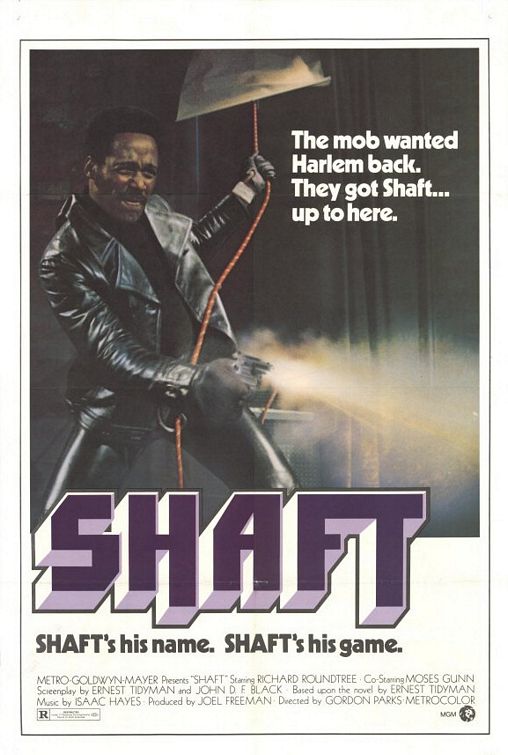 As a child, he became a voracious reader because of the movies. He was too young to be allowed to see the film Shaft. So when he was about 11 or 12, he bought the record “which was so fantastic” that he went on to read the novel.
As a child, he became a voracious reader because of the movies. He was too young to be allowed to see the film Shaft. So when he was about 11 or 12, he bought the record “which was so fantastic” that he went on to read the novel.
“That got me reading. It was like having illicit knowledge. I couldn’t go see One Flew Over the Cuckoo’s Nest or The Godfather, but I could read the books. They were just wonderful. My parents gave me no censorship when it came to books.”
But mysteries weren’t quite on Rankin’s radar yet.
“I didn’t read Christie or Chandler. But I did watch a lot of cop shows on TV. I loved the film Where Eagles Dare [written by Alistair MacLean, another Scot]. And I read thrillers as a kid but I dismissed them and went to literature at university.
“Then when I started writing, I had forgotten how wonderful thrillers were. It’s so great to put down James Joyce and pick up crime fiction.” Before Rankin, Scotland didn’t have a tradition of crime fiction.
“What it does have is a tradition of dark, gothic thrillers. Or it has adventure novels such as John Buchan’s The Thirty-Nine Steps. If you look at The Prime of Miss Jean Brodie, there’s a lot of dark and gothic tones in it. Fortunately, there was an author named William McIlvanney who was writing literary novels, but he also wrote three detective novels. He made it OK for me to write crime fiction,” said Rankin. “For me, there is no difference between literature and crime fiction. It has the same quality. In the UK, critics often say crime fiction is too schematic and doesn’t allow for real life. That’s all rubbish. Crime fiction is changing and better and better books are being written. Crime fiction is having a huge explosion in Scotland because there is no tradition authors had to follow. In England, you had to write a certain way, following in the spectre of Agatha Christie. Not in Scotland. Here, you can write anything.”
Now Rankin is joined by such excellent contemporary Scottish writers such as Val McDermid, Denise Mina and Stuart McBride, to name just a few.
Fame has brought him attention, but Rankin seems unaffected.
“Special treatment? Not hardly,” he says with a laugh. “Scots pride themselves on being democratic. It’s like a little tribe. If you think differently, it can be awkward. That’s why many have left Scotland, because they are not understood. It’s like everyone is waiting for you to get self important and then you get knocked down. It can be scary to stand out from the crowd. When I was a kid writing poetry, I didn’t tell anyone. I had to be a chameleon to fit in. It wasn’t until a poem of mine was published in the paper that my parents found out about it. And then someone else had to tell them.”
Rankin and his wife, Miranda, who met at university, have two sons, Jack, 14, and Kit, 12, who has Angelman Syndrome, a rare brain disorder. Rankin has acted as a good-will ambassador for several advocacy groups. For the Special Needs Information Point, based at the Royal Hospital for Sick Children in Edinburgh, he gave 1,000 signed copies of a short story to auction for its funds. “I became active because of self interest—these organizations helped Kit when he was diagnosed so I wanted to give back.”
Rankin’s success has brought him a better address. As of four years ago, his neighbors now include Alexander McCall Smith, who lives two houses down. (“He’s always on tour in America, but I see him quite a lot.”). And J.K. Rowling lives “at the top of the road.”
“My wife and I were out today and ran into Jo. So we had coffee and a chin wag with her,” he said. “The day we moved in neighbors told me, ‘You know you’re not the only writer who lives here.’”
As Rebus’ 20th anniversary gears up, it’s also a bittersweet celebration. When he began the series, Rankin made the decision that Rebus would age with each book. That once 40-year-old detective is now nearing 60 and Rankin finds himself at a crossroads in this series. At 60, Rebus will be at the mandatory retirement age for a detective in Scotland. Rankin currently is writing the final novel before Rebus retires from the force.
{youtube width="500"}Hqv31tp8Zx0{/youtube}
“I made him age in real time and I am not going to cheat and stop the clock now. But there are a lot of routes he can take. He can do consultant work. A lot of detectives who are retired come back to do cold cases.” One thing for sure, Rankin has said in several interviews that he will not kill Rebus. “Oh, definitely not going to kill him. No…. But, who knows? It’s happens to me a lot: I start with one way and then go another. I love that, the idea of leaving it to chance,” he said, with a laugh. “Right now I have the opening scene and am 100 pages into the draft and I have no idea where it’s going.”
Rebus’ retirement is not being taken lightly. One member of Scotland’s Parliament actually proposed changing the rule in real life so Rebus can keep working. “You can’t imagine the hate mail I’ve gotten from cops who don’t want that [rule] change,” said Rankin.
No matter what, he certainly doesn’t plan to be idle. In addition to his other projects, Rankin will be following his fellow Scot, Denise Mina, by writing six or seven comics about the cult character John Constantine, hero of the Hellblazer series.
And he will have left readers a rich legacy with his John Rebus novels.
“I think I am doing a fairly complete picture of an individual and of Scotland,” Rankin said. “If you look at the series as a whole, the jigsaw will be complete. It will cover racism, religion, politics, economics, all sorts of things. The novels will be a photograph of a Scot and how we got him."
Ian Rankin Reading List
Standalone Novels
The Complaints (2009)
Doors Open (2008)
Exit Music (2007)
Westwind (1990)
Watchman (1988)
The Flood (1986)
Inspector Rebus Novels
The Naming of the Dead (2006)
Fleshmarket Close (2004)
A Question of Blood (2003)
Resurrection Men (2002)
The Falls (2001)
Set in Darkness (2000)
Dead Souls (1999)
The Hanging Garden (1998)
Black and Blue (1997)
Let it Bleed (1995)
Mortal Causes (1994)
The Black Book (1993)
Strip Jack (1992)
Tooth and Nail (1992)
Hide and Seek (1991)
Knots and Crosses (1987)
Jack Harvey Novels
Blood Hunt (1995)
Bleeding Hearts (1994)
Witch Hunt (1993)
Other Titles
Dark Entries (2009), graphic novel
A Cool Head (2009), novella
The Complete Short Stories: "A Good Hanging," "Beggars Banquet," "Atonement" (2005)
Rebus's Scotland: A Personal Journey (2004), nonfiction
This article first appeared in Mystery Scene Spring 2007 Issue #99







 As a child, he became a voracious reader because of the movies. He was too young to be allowed to see the film
As a child, he became a voracious reader because of the movies. He was too young to be allowed to see the film  Ian Rankin discusses his work, and remembers John Rebus in this 2007 interview from Mystery Scene.
Ian Rankin discusses his work, and remembers John Rebus in this 2007 interview from Mystery Scene.
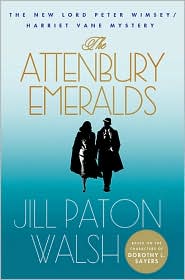 Lord Peter Wimsey returns in the latest novel of a series based on the detective of Dorothy L. Sayers.
Lord Peter Wimsey returns in the latest novel of a series based on the detective of Dorothy L. Sayers. Cowboy 'tecs, the Amlingmeyer brothers, return for more fun, this time at the 1893 Chicago World's Fair.
Cowboy 'tecs, the Amlingmeyer brothers, return for more fun, this time at the 1893 Chicago World's Fair.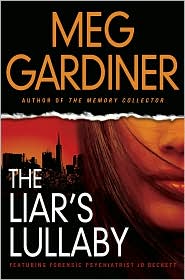 By now, the authors have gone home, even if they stayed for a Florida vacation and the posters have been stored for next year. And, just to make it official, the hotel has been turned over to another group.
By now, the authors have gone home, even if they stayed for a Florida vacation and the posters have been stored for next year. And, just to make it official, the hotel has been turned over to another group. * Meg Gardiner (
* Meg Gardiner ( nonfiction
nonfiction  I’ve always said that mystery writers are among the most generous.
I’ve always said that mystery writers are among the most generous.
 This is the first novel from Brockovich and most likely will not be her last, judging from the reviews. (
This is the first novel from Brockovich and most likely will not be her last, judging from the reviews. ( I’ve been on a kick lately to muck out my office and get rid of ..oh…a couple of thousand books or so.
I’ve been on a kick lately to muck out my office and get rid of ..oh…a couple of thousand books or so. 


 In In the Woods, local residents, archeologists, developers and politicians clash over a historical site slated to be churned up, then buried under a new motorway—mirroring the real-life conflict surrounding the Hill of Tara, home to Ireland’s ancestral kings.
In In the Woods, local residents, archeologists, developers and politicians clash over a historical site slated to be churned up, then buried under a new motorway—mirroring the real-life conflict surrounding the Hill of Tara, home to Ireland’s ancestral kings.  A chat with Tana French, whose Faithful Place is nominated for a 2011 Best Novel Edgar Award.
A chat with Tana French, whose Faithful Place is nominated for a 2011 Best Novel Edgar Award.
 So often I am asked for suggestions on which book to read. Usually, I ask what is the person interested in, does he or she like the hard-edged stories or the softer ones, and even what the person’s occupation is. The answers factor into my recommendations.
So often I am asked for suggestions on which book to read. Usually, I ask what is the person interested in, does he or she like the hard-edged stories or the softer ones, and even what the person’s occupation is. The answers factor into my recommendations.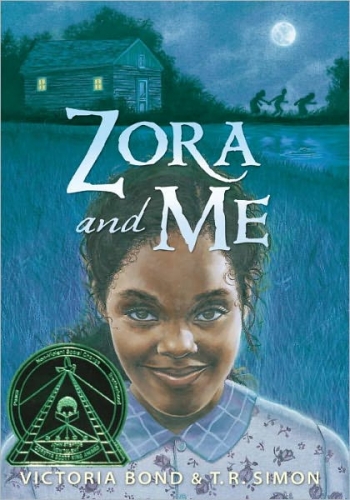

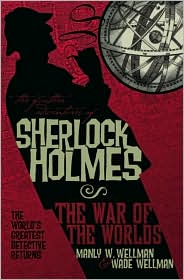
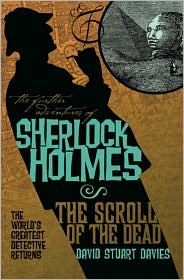
 The Great Detective travels beyond Arthur Conan Doyle’s stories in these Titan Books reprints.
The Great Detective travels beyond Arthur Conan Doyle’s stories in these Titan Books reprints. The real proof in the new medical examiner drama Body of Proof, which from a special preview looks like a run-of-the mill series, may not be in the plots, but in the appeal of Dana Delany.
The real proof in the new medical examiner drama Body of Proof, which from a special preview looks like a run-of-the mill series, may not be in the plots, but in the appeal of Dana Delany.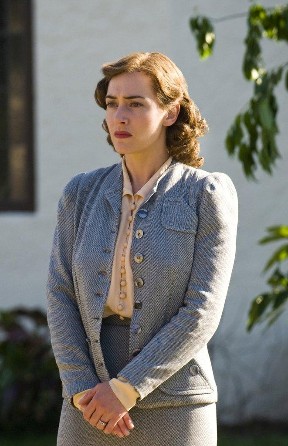 To most mystery fiction readers, James M. Cain remains one of the classic noir authors. His novels are still considered a major part of the crime fiction canon.
To most mystery fiction readers, James M. Cain remains one of the classic noir authors. His novels are still considered a major part of the crime fiction canon.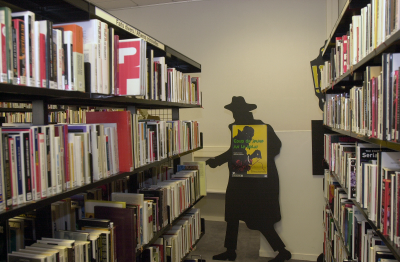
 The exhibit was a huge success for a much better prepared general public, which saw the cadaver clearly upon entering the building. Nevertheless, each of the sevenperson staff has remained a mystery fan and a devoted worker in a unique project soon to enter its 20th year.
The exhibit was a huge success for a much better prepared general public, which saw the cadaver clearly upon entering the building. Nevertheless, each of the sevenperson staff has remained a mystery fan and a devoted worker in a unique project soon to enter its 20th year.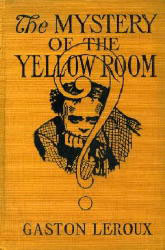 But since moving to its own quarters, the BiLiPO has also vastly developed its role as a meeting place for crime fiction lovers and authors. The authors come from around the world to meet the public in readings or seminars, to meet each other and also to do research.
But since moving to its own quarters, the BiLiPO has also vastly developed its role as a meeting place for crime fiction lovers and authors. The authors come from around the world to meet the public in readings or seminars, to meet each other and also to do research.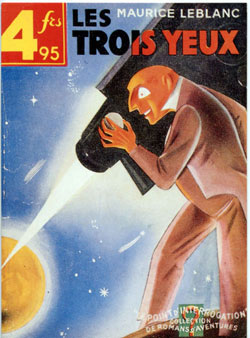 Last summer’s exhibition was about dogs and cats in crime fiction, and a large exhibition about crime and mystery theater in 20th-century France opened in November and is running for several more months. While that will naturally contain information and artifacts—such as posters, scripts and programs—about the Agatha Christie plays that have been produced in France, the emphasis is on French theater. It will, for example, feature material about Maurice Leblanc, who wrote plays and musical comedies about his character Arsène Lupin.
Last summer’s exhibition was about dogs and cats in crime fiction, and a large exhibition about crime and mystery theater in 20th-century France opened in November and is running for several more months. While that will naturally contain information and artifacts—such as posters, scripts and programs—about the Agatha Christie plays that have been produced in France, the emphasis is on French theater. It will, for example, feature material about Maurice Leblanc, who wrote plays and musical comedies about his character Arsène Lupin. Movies based on novels often give the books an extra push, bringing in new readers and even making those familiar with an author want to revisit those novels.
Movies based on novels often give the books an extra push, bringing in new readers and even making those familiar with an author want to revisit those novels.

